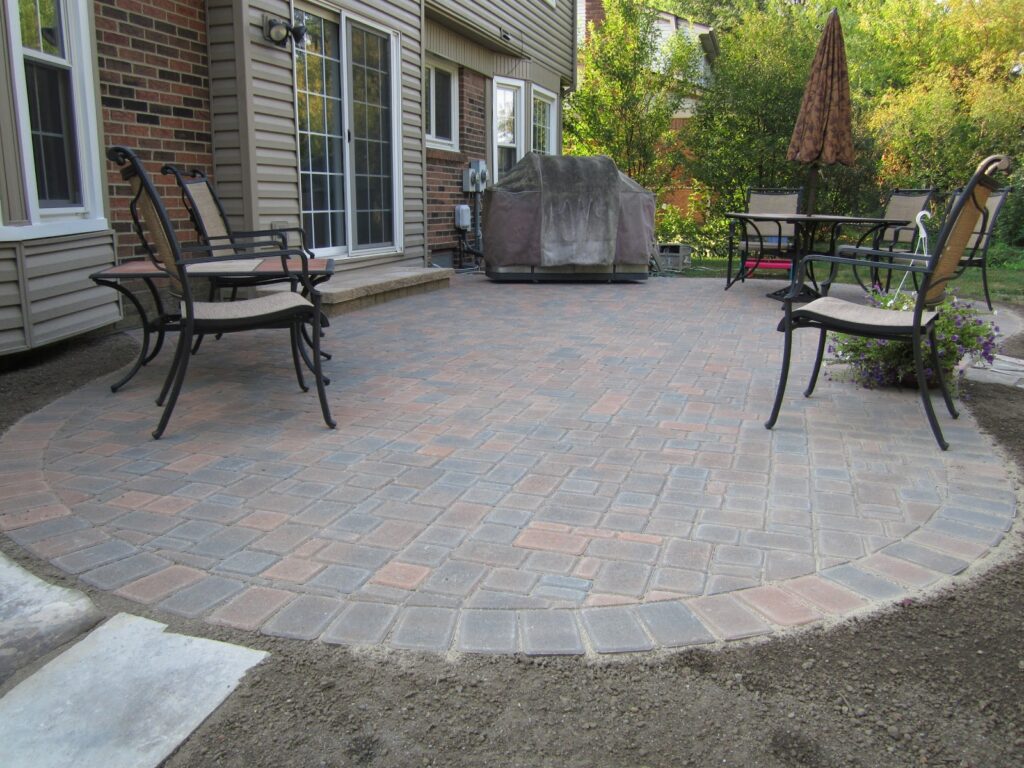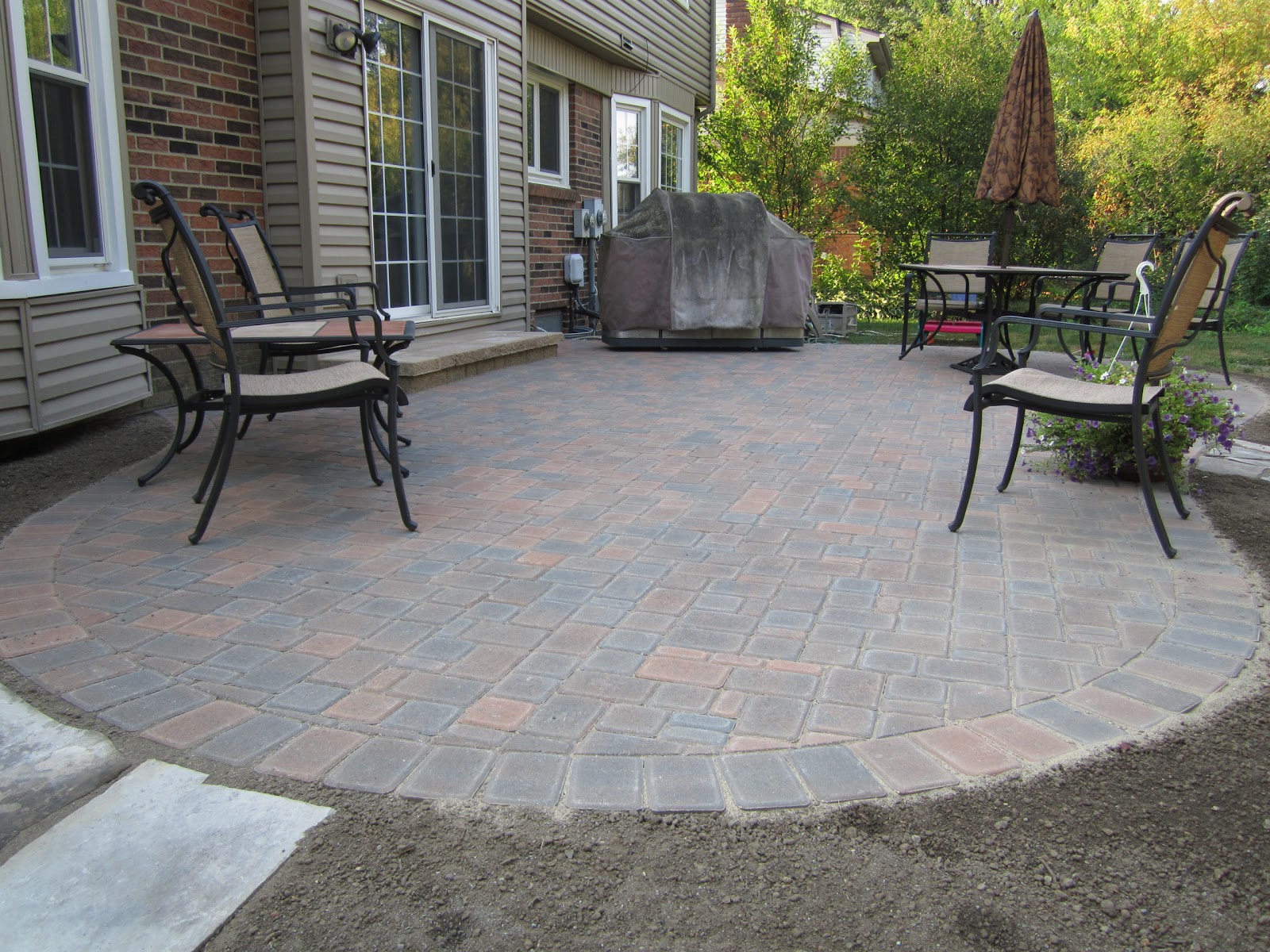
Crafting the Perfect Brick Paver Patio: A Comprehensive Guide
A brick paver patio is more than just an outdoor space; it’s an extension of your home, a place for relaxation, entertainment, and creating lasting memories. The timeless appeal of brick, combined with its durability and versatility, makes it a popular choice for homeowners looking to enhance their outdoor living areas. This comprehensive guide will walk you through every aspect of designing, planning, and building your own brick paver patio, ensuring a beautiful and functional space for years to come.
Why Choose a Brick Paver Patio?
Before diving into the construction process, let’s explore the benefits of opting for a brick paver patio:
- Aesthetics: Brick offers a classic, warm, and inviting look that complements various architectural styles. The variety of colors, patterns, and textures available allows for customization to match your personal taste and home’s aesthetic.
- Durability: Brick pavers are incredibly durable and can withstand heavy foot traffic, extreme weather conditions, and even the weight of vehicles if properly installed. They are resistant to cracking, chipping, and fading, ensuring a long-lasting patio.
- Low Maintenance: Compared to other patio materials like concrete or wood, brick paver patios require minimal maintenance. Regular sweeping and occasional cleaning are usually sufficient to keep them looking their best.
- Easy Repairs: If a brick paver becomes damaged, it can be easily replaced without having to tear up the entire patio. This makes repairs quick, cost-effective, and less disruptive.
- Increased Home Value: A well-designed and constructed brick paver patio can significantly increase your home’s value and curb appeal. It adds functional living space and creates a desirable outdoor environment.
- Permeability: Depending on the installation method, brick pavers can be installed to allow for water permeability, reducing runoff and promoting better drainage.
Planning Your Brick Paver Patio
Careful planning is crucial for a successful brick paver patio project. Here are some key considerations:
Size and Location
Determine the ideal size and location of your patio based on your needs and the available space. Consider how you plan to use the patio – will it be primarily for dining, lounging, or entertaining? Factor in the size of your outdoor furniture and the number of people you typically host. Also, think about sun exposure, wind direction, and proximity to your house and other landscape features.
Design and Layout
Explore different brick paver patterns and layouts to find one that suits your style and complements your home’s architecture. Common patterns include running bond, herringbone, basket weave, and circular patterns. Consider using different colors or textures of brick to create borders, accents, or intricate designs. Utilize online resources and design software to visualize your patio layout before starting construction. [See also: Patio Design Ideas]
Materials and Budget
Research different types of brick pavers and compare prices. Clay brick is a classic choice, known for its durability and natural appearance. Concrete pavers offer a wider range of colors and styles and are often more affordable. Consider the cost of other materials, such as base materials (gravel, sand), edging, and sealant. Set a realistic budget and stick to it as closely as possible. Don’t forget to factor in the cost of tools and equipment if you plan to do the work yourself, or the cost of professional installation.
Permits and Regulations
Check with your local building department to determine if you need any permits before starting your brick paver patio project. Some municipalities have regulations regarding the size, location, and construction methods of patios. Obtaining the necessary permits can help you avoid potential fines and ensure that your patio meets all applicable building codes.
Building Your Brick Paver Patio: Step-by-Step Guide
Building a brick paver patio is a manageable DIY project for experienced homeowners. However, it requires careful planning, attention to detail, and physical labor. If you’re not comfortable with any of the steps, consider hiring a professional contractor.
Step 1: Excavation
Excavate the area for your patio to the desired depth. This will typically be 6-8 inches, depending on the thickness of your pavers and the depth of the base materials. Remove any grass, topsoil, and debris. Ensure that the excavation is level and compacted.
Step 2: Base Installation
Install a base layer of compacted gravel, typically 4-6 inches thick. This provides a stable foundation for your patio and helps with drainage. Use a plate compactor to thoroughly compact the gravel base. Add a layer of landscape fabric to prevent weeds from growing up through the pavers.
Step 3: Sand Bedding
Spread a 1-inch layer of leveling sand over the compacted gravel base. Use a screed board to create a smooth, even surface. This sand bed will provide a cushion for the brick pavers and allow for minor adjustments during installation.
Step 4: Paver Installation
Begin laying the brick pavers according to your chosen pattern. Start at one corner and work your way across, using a rubber mallet to gently tap each paver into place. Maintain consistent spacing between the pavers. Use a level to ensure that the pavers are even and flush with each other. [See also: Brick Paver Installation Techniques]
Step 5: Edging Installation
Install edging around the perimeter of your patio to prevent the pavers from shifting and to provide a finished look. Edging can be made from various materials, such as plastic, metal, or concrete. Secure the edging with stakes or spikes.
Step 6: Joint Sanding
Sweep joint sand into the spaces between the pavers. This will help to lock the pavers in place and prevent weeds from growing. Use a plate compactor with a rubber pad to compact the sand and settle the pavers. Repeat the joint sanding process as needed.
Step 7: Sealing (Optional)
Apply a sealant to your brick paver patio to protect it from stains, fading, and weathering. Sealing can also enhance the color and appearance of the pavers. Choose a sealant that is specifically designed for brick pavers and follow the manufacturer’s instructions. A brick paver patio sealant is a great way to extend the life of your patio.
Maintaining Your Brick Paver Patio
With proper care and maintenance, your brick paver patio will provide years of enjoyment. Here are some tips for keeping your patio looking its best:
- Sweep regularly to remove dirt, leaves, and debris.
- Wash the patio with soap and water as needed.
- Remove stains promptly with a stain remover designed for brick pavers.
- Reapply joint sand as needed to fill in any gaps between the pavers.
- Reseal the patio every few years to protect it from the elements.
- Inspect the patio regularly for any signs of damage and make repairs promptly.
Common Brick Paver Patio Problems and Solutions
Even with proper installation and maintenance, brick paver patios can sometimes experience problems. Here are some common issues and their solutions:
- Weeds: Weeds can grow up through the joints between the pavers. To prevent weeds, use a weed preventer or apply a sealant to the patio. You can also manually remove weeds or use a weed torch.
- Settling: Over time, the pavers may settle or shift, creating an uneven surface. This can be caused by improper base preparation or poor drainage. To fix settling, remove the affected pavers, re-level the base, and reinstall the pavers.
- Stains: Brick pavers can be stained by oil, grease, rust, or other substances. To remove stains, use a stain remover designed for brick pavers. You may need to scrub the stain with a brush.
- Cracking: While brick pavers are durable, they can crack under extreme stress or due to improper installation. Replace any cracked pavers promptly to prevent further damage.
Brick Paver Patio Ideas and Inspiration
Looking for inspiration for your brick paver patio? Here are some ideas to get you started:
- Outdoor Kitchen: Create an outdoor kitchen with a built-in grill, countertop, and storage space.
- Fire Pit: Add a fire pit to create a cozy and inviting atmosphere.
- Water Feature: Incorporate a water feature, such as a fountain or pond, to add a touch of tranquility.
- Pergola: Build a pergola over your patio to provide shade and create a defined outdoor space.
- Landscaping: Surround your patio with lush landscaping to create a beautiful and inviting environment.
Conclusion
A brick paver patio is a valuable addition to any home, providing a beautiful and functional outdoor space for relaxation, entertainment, and creating lasting memories. By following this comprehensive guide, you can plan, design, and build a brick paver patio that meets your needs and enhances your lifestyle. Whether you choose to tackle the project yourself or hire a professional contractor, the end result will be a stunning outdoor oasis that you can enjoy for years to come. Consider all aspects of the project, from design to maintenance, to ensure your brick paver patio stands the test of time and continues to be a source of pride and enjoyment.

